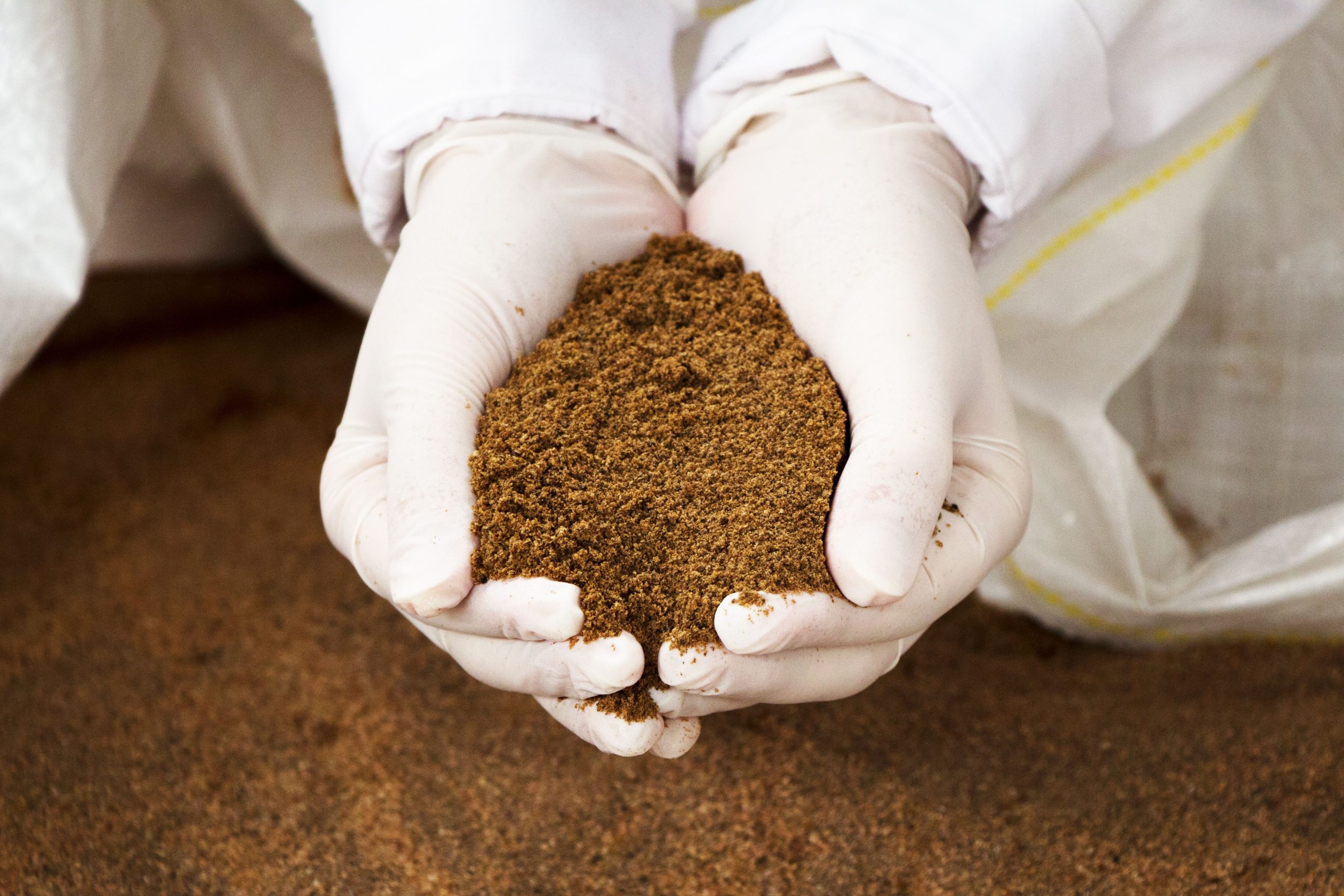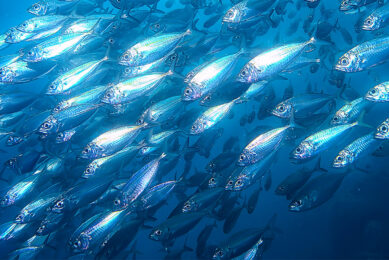Heading towards total replacement of fish meal

The potential of insect meal for aquafeed is huge and trials showed that Tenebrio molitor meal (mealworm meal) can effectively replace fish meal and blood meal in the diet of juvenile Nile tilapia. Results of a 3 month study are presented here.
The ingredients used in aquafeed are generally based on fish meal and soybean meal but are considered nowadays as non-sustainable to feed farmed fish. Novel sources of proteins are thus necessary to replace or partially replace conventional ingredients for which there is an increasing demand due to the intensification of farming methods. Several studies have shown that insect-based ingredients could be a good candidate as fish meal alternative (see review by Henry et al, 2015). As of 1 July 2017, the EU Regulation 2017/893 has authorised the use of insect proteins in aquafeed from seven insect species including the yellow mealworm, Tenebrio molitor.
Insect composition varies species to species
Entomo Farm breeds and transforms insects for the agro-food industry. Based in Libourne (France), the company operates a unique eco-industrial insect farming system, which allows producing large quantities of insects with very few resources, while ensuring a final product that is safe, 100% traceable and chemical-free. Tenebrio molitor meal has a high protein content (>70%) and an essential amino acids profile which shows a good correlation with fish requirement values. Its composition is presented in Table 1. Recently, a 3 month study launched by Entomo Farm together with the French aquaculture feed laboratory IctyoPharma have been finished. Scientists evaluated the efficacy of graded incorporation levels of insect meal (Tenebrio molitor meal) on growth performance, body composition and nutrient retention in Nile tilapia (Oreochromis niloticus) juveniles.
The popularity of insect meal as a new protein has taken off – find more articles here about new developments, regulations and innovations.
Previous studies evaluated the effect on the performance, feed utilisation and body composition of Black Soldier Fly (BSF) larvae meal in the diet of Nile tilapia but no significant differences were found between the different treatments (Devic et al, 2017). Insect composition varies according to the species, the stage, the diet and the rearing conditions. Yellow mealworm composition is thus different to Black Soldier Fly composition and the following results show that T. molitor is a better candidate to replace fish meal in the diet of tilapia.
The trial was conducted with 4 dietary treatments: a control diet containing 15% fishmeal and 5% porcine blood meal as major protein sources, and 3 diets in which the insect meal was incorporated at 10, 15 and 20% at the expenses of the fishmeal and porcine blood. All diets were isonutrigenous, isolipidic and isoenergetic. At the start of the experiment, the mean initial body weight of the fishes was 10.7 ± 0.4 grams. Growth was monitored through intermediate samplings carried out on day 13, day 31, day 46 and day 61.
Improved growth performance
First differences appeared at day 46: fish fed diet with a 10% incorporation of insect meal showed a significantly higher final body weight (FBW) and specific growth rate (SGR) than those fed all other diets (Figures 1 and 2). These statistically significant differences were maintained until the end of the 61 days trial, with SGR values varying between 3.56 and 3.67%/day for the total duration of the trial. The enhancement of weight gain is not associated to a higher feed intake, and therefore suggest a better metabolic adequacy of the 10% incorporation diet. The fish fed diet with a 20% incorporation of insect meal showed an overall growth performance similar to those fed the control diet (containing 15% fishmeal and 5% porcine blood meal), suggesting that insect meal could successfully replace 100% of fish meal and porcine blood meal in tilapia diet. It was shown that feed intake was not significantly affected by dietary treatments, which confirms that the graded incorporation levels of insect meal do not impact feed palatability. At the end of the trial, final body weight varied between 93.7 and 100.7 grams, with fishes from the best performing treatment showing a 9-fold increase of their initial body weight. The various dietary levels of insect meal had no effect on the whole body composition of the fish.
Figure 1 – Final body weight (in grams) of tilapia fed the various dietary treatments.

Figure 2 – Specific growth rate (in %/day) of tilapia fed the various dietary treatments.

Insect meal could be used as a source of protein
These data indicate that insect meal, tested in this trial, has the potential to be used as a protein source and could effectively replace 100% of fish meal and blood meal in the diet of juvenile Nile tilapia.
References are available on request.
By: Delphine Calas-List Phd, Research Director, Entomo Farm, France











